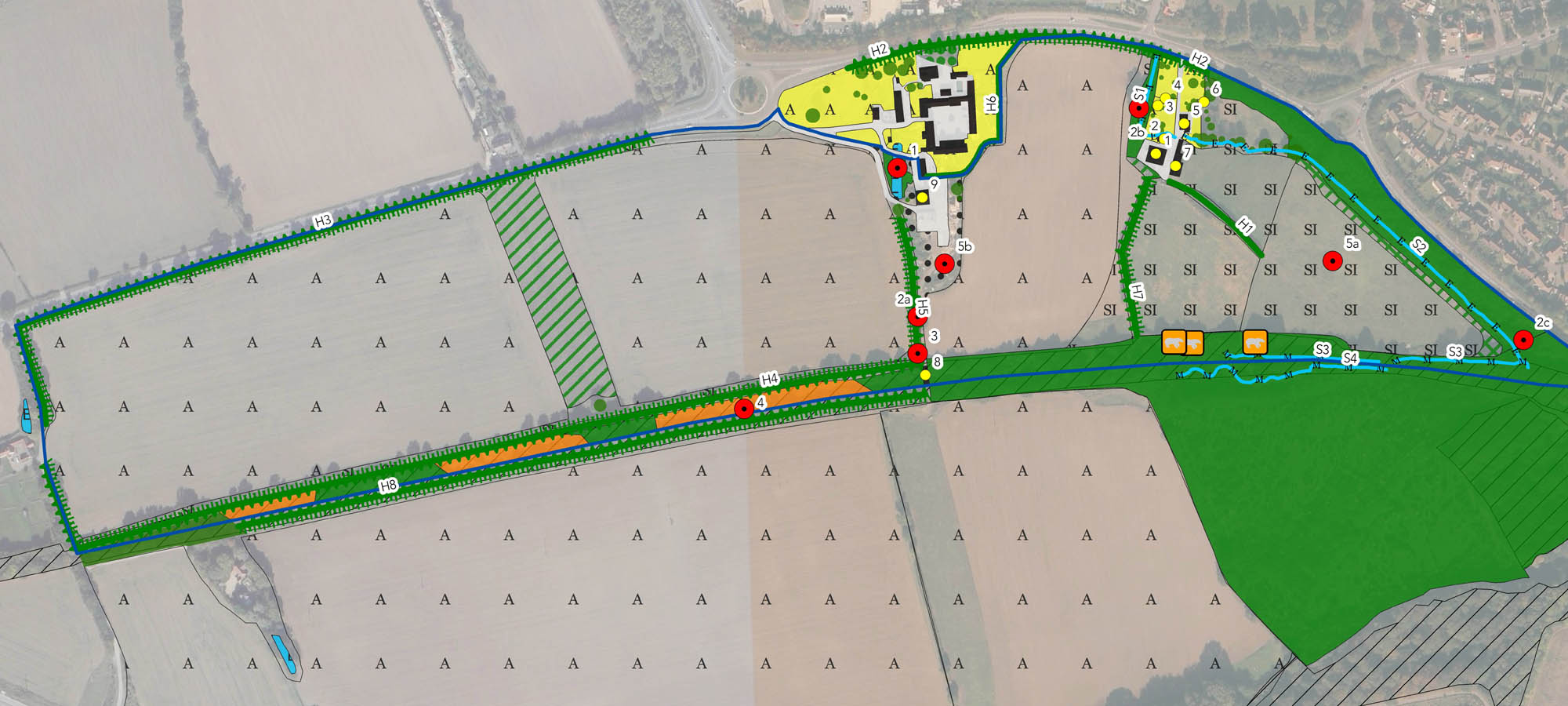Preliminary Ecological Appraisal (PEA)
An ecological assessment usually begins with a Preliminary Ecological Appraisal or PEA (previously known as an Extended Phase 1 Habitat Survey).
The main purpose of the PEA is to identify the habitats present within the survey area and assess their potential to support protected species. It highlights any features which are ecologically significant and may represent a constraint and makes a preliminary assessment of impacts, potential mitigation measures and opportunities for enhancement. The PEA will also scope out any further survey requirements.
A PEA can be carried out at any time of year. Although summer months are more favourable for assessing botanical species, from a project management perspective, winter is the best time, so that any further surveys required can be started on time in the spring or summer.
During the PEA site survey, each habitat type is classified using a habitat classification index – either Phase One or UKHab. UKHab is also used for Biodiversity Net Gain assessments, so a during a PEA site survey we can capture all the information we need to calculate a baseline BNG value for the site.
A habitats map will then be created to give an instant visual representation of the site, using standard colour codes and “target notes” for finer detail where necessary.
During the PEA survey we will look for any evidence of use by or features with the potential to support great crested newts, nesting birds, badger, bats, hazel dormouse, otter, water vole and reptiles. It includes a Preliminary Roost Assessment of any buildings (internal and external) and trees, to assess their potential for roosting bats, a preliminary badger inspection and a Habitats Suitability Index of any accessible ponds within 250m of the site to assess their suitability for great crested newts.
Where a site consists of buildings only, a Preliminary Roost Assessment only may be sufficient, instead of a full PEA.
The Preliminary Ecological Appraisal is also informed by a desk study. Recent biological records data will be sourced which will list existing records of protected species within an area of usually 2km of the site. The desk-top study will also include a review of statutory and/or non-statutory site designations and assess the impact of the development to any protected sites.
We can report back early with key summary findings of the PEA, ahead of the full report. The report will include the results of the site survey and desk-top study, a general assessment of habitats, a habitats map, an evaluation of potential impacts to protected species and recommendations for further surveys, mitigation and enhancement measures.

